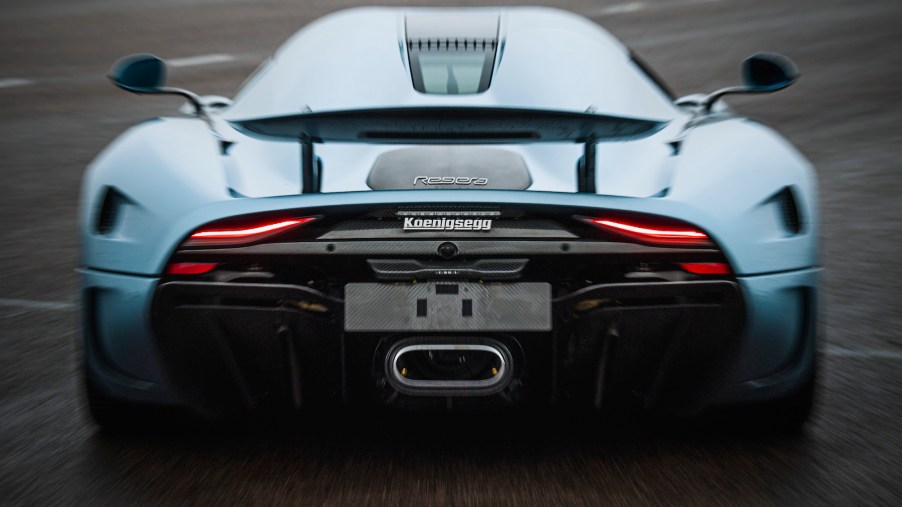
Koenigsegg: A History of Sweden’s Hypercar King
High-performance sports cars draw eyes. But one Swedish automaker attracts attention not only for its head-turning hypercars but also for its potent engines. Christian von Koenigsegg built his namesake from the ground up. Here, we share the history of Sweden’s hypercar king.
Koenigsegg’s beginnings
Christian von Koenigsegg had always been interested in how things work. So he spent much of his younger years taking apart video recorders and even toasters. In his teens, his technological curiosity led to vehicles. It led to his becoming known as the best moped tuner in town, Koenigsegg explains.
His passion eventually turned to cars, especially after seeing a stop-motion movie portraying a bicycle repairman who built his own race car. In 1994, at 22 years old, Mr. Koenigsegg founded a business that’s become famous: Koenigsegg Automotive.
Two years later, the Koenigsegg CC model went public at the Anderstorp racetrack. It was a prototype, but that didn’t stop many racers from wanting to take it for a spin on the track. Those who did were more than impressed with the CC’s performance.
Fast-forward to today, and Koenigsegg continues to build high-performance sports cars. And sales don’t appear to be waning.
Popular Koenigsegg models
The Koenigsegg workshop has created many hypercars since the CC. Debuting at the Paris Motor Show in 2000, the CC8S (CC V8 Supercharged) packed a 655-hp engine. Two years later, it took a Guinness World Record for the most powerful motor. It’s now considered a rare car.
From 2004 to 2006, Koenigsegg outdid himself by introducing the CCR, providing even more power than the CC8S could muster. The newer model could generate 806 hp. So, Guinness World Records verified it and gave Koenigsegg a new spot for the highest engine output. In 2005, though, the automaker would again see Guinness, this time for the fastest car (a record the McLaren F1 previously held). The CCR clocked 60 mph in 3.2 seconds and a searing top speed of 387.86 km/h.
Along came 2006, and Koenigsegg was ready to hit a new market, one on American soil. The newest CCX model became the first high-performance sports car the company sold to U.S. consumers. The CCX’s layout continued Koenigsegg’s traditional setup with a mid-engine V8 motor and carbon fiber tub. It was slightly larger than previous models to meet other markets’ safety and emissions standards.
It was the Agera S that made the biggest waves in the decade following the CCX. But Koenigsegg hit a snag with this vehicle because biofuels weren’t as readily available at the time. The engine saw major remapping and new hardware. It could generate a hefty output using regular gasoline — producing an insane 1,040 hp.
The brand’s latest stunner
If you thought the Agera RS was a dream, you’d love the latest model based on it. The Koenigsegg Jesko Absolut sports the same fast and furious styling, but it packs an impressive V8 harnessing a whopping 1,280 hp.
According to Car and Driver, the motor pairs with a nine-speed transmission, made from scratch at the Koenigsegg workshop. The price for this bad boy starts at a cool $3 million. The Jesko Absolut comes in two variants. One is strictly for the racetrack, and the other is street-legal.
With the Jesko, you’ll get rear-wheel steering for faster cornering, 20-inch forged aluminum wheels in the front, 21-inch wheels in the back, a front splitter, a rear diffuser, and a larger-than-life rear wing. Inside, you’ll find power windows, adjustable pedals, and a removable hardtop. Leather or microfiber hug the seats.
Koenigsegg has been well-known in Sweden for a quarter-century, but the company has made a name for itself in many countries. From humble beginnings to award-winning vehicles, Koenigsegg Automotive is tough to beat, thanks to its hardworking and passionate founder.


